I tested the best HDMI 2.1 TVs and these are the 5 I recommend right now
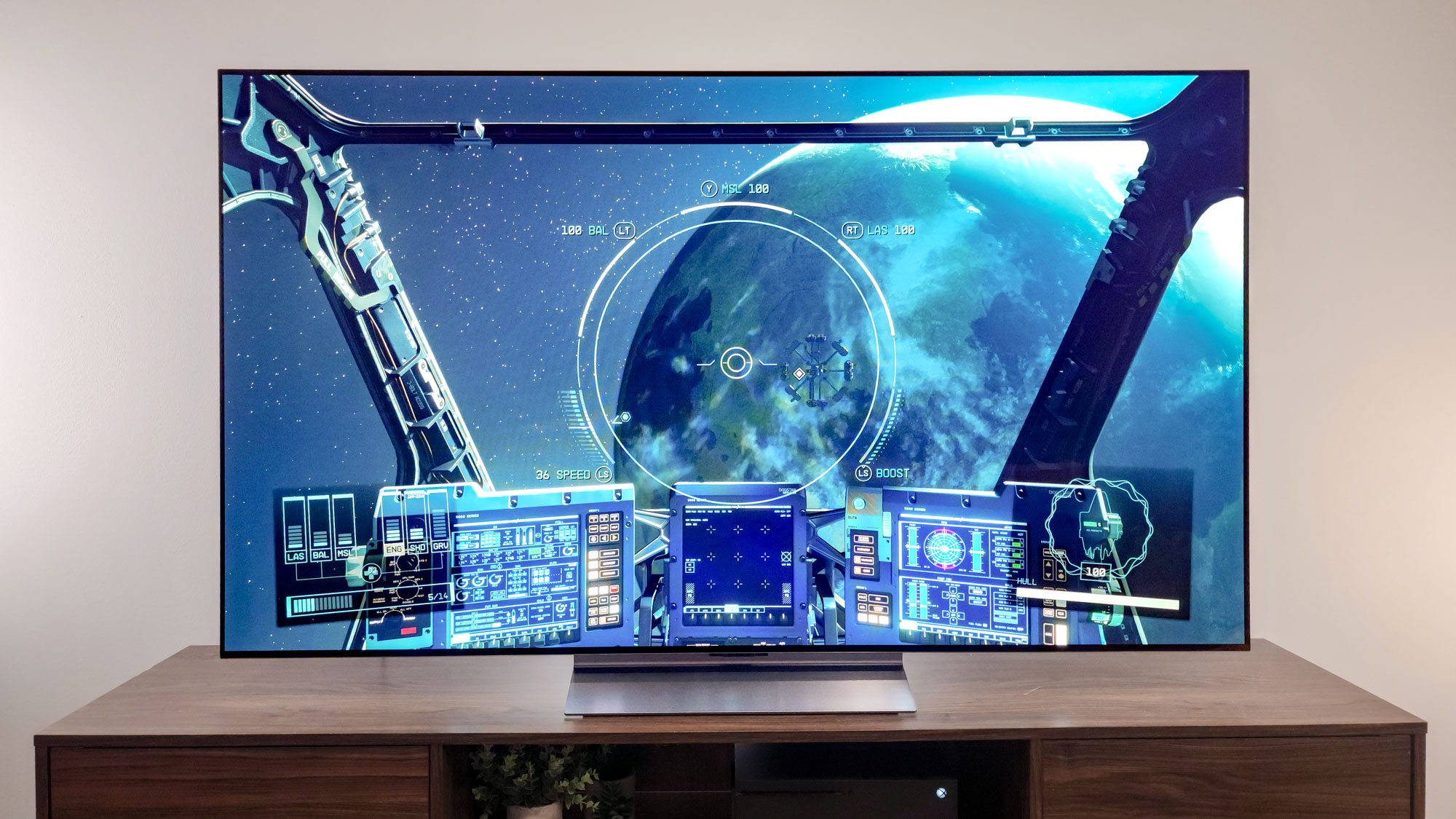
The best HDMI 2.1 TVs offer the most advanced features for connected devices, including gaming consoles, PCs, Blu-ray players, and even audio equipment. HDMI 2.1 boasts significant improvements over HDMI 2.0, enabling access to a wider range of features and advanced settings that can enhance controls, picture quality, gaming, and other features for daily content consumption.
With my years of testing across various TVs and devices, I know exactly what to look for in the best HDMI 2.1 TVs. As a big fan of Blu-ray players and the championing of physical media, leveraging HDMI 2.1 for eARC and Dynamic HDR is a huge necessity in my book if you're looking to get the most stellar picture and audio quality. Plus, HDMI 2.1 benefits both console and PC gamers looking for 120Hz support at 4K via VRR.
In my opinion, the most apt choice for such a TV is one with a full range of HDMI 2.1 ports, and the best model that currently exemplifies this is the LG C5 OLED. As already mentioned, it offers four HDMI 2.1 ports with VRR and ALLM support, and is one of the few TVs on the list to receive a perfect score in our review.
Despite being the value OLED proposition of 2025, the C5 remains plenty expensive. A more budget-friendly alternative that still offers excellent picture quality is the Hisense U75QG Mini-LED TV, which is similarly equipped with four HDMI 2.1 ports and modern upgrades. The U75QG is one of the brightest TVs we tested all year, making it particularly ideal if your TV is placed in a sunnier environment.
For more options on your hunt for the best HDMI 2.1 TVs, check out the full list below and get yourself the right display for all your connected devices.
Quick list
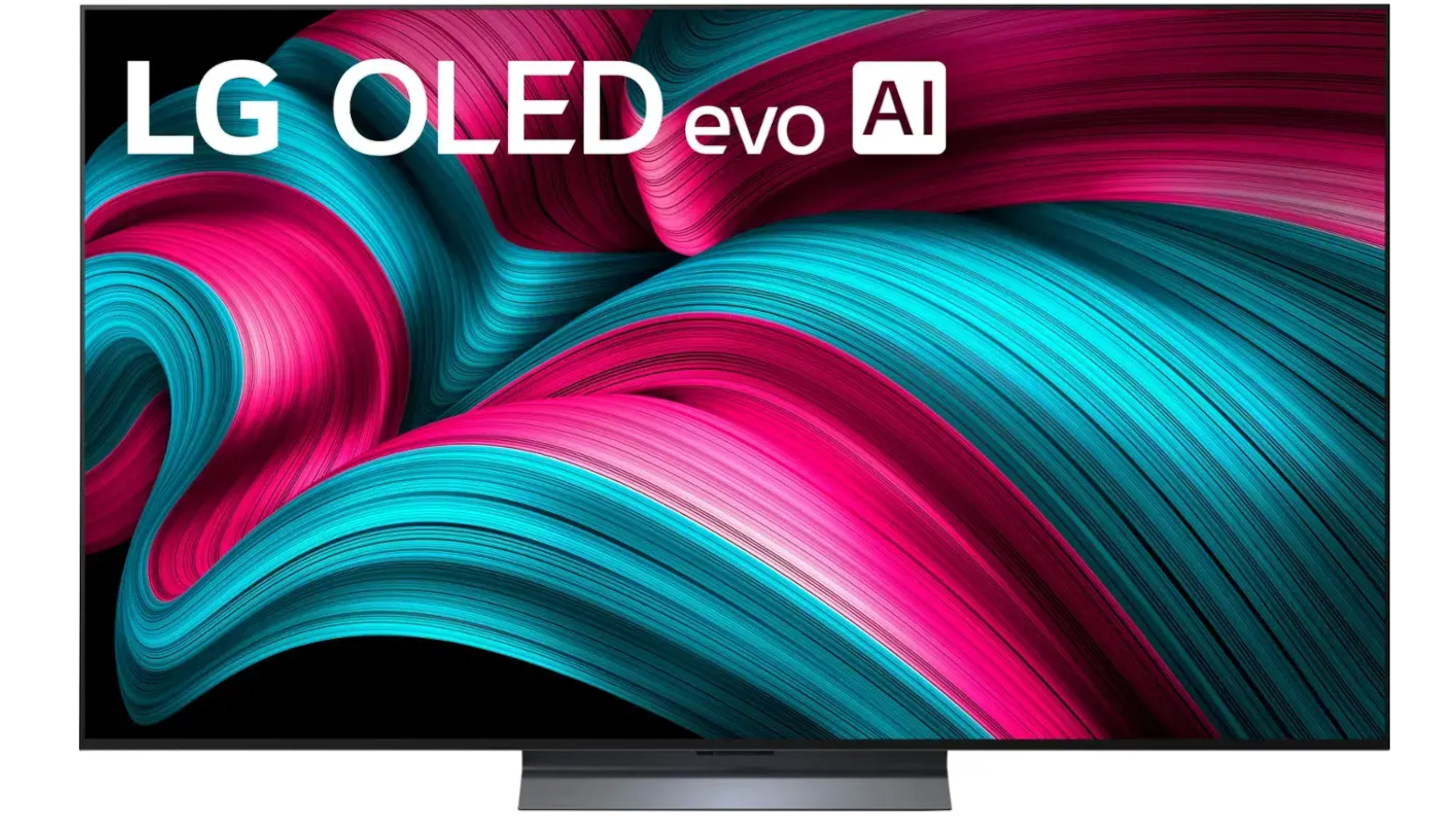
LG’s mid-range 2025 OLED TV delivers a class-leading selection of gaming-related features and the incredible picture quality OLED TVs are famous for. It’s a solid value proposition if you're hunting for an OLED packed with HDMI 2.1 features.

The Hisense U75QG is well-rounded for the price, offering a 165Hz refresh rate with Dolby Vision support. It boasts four HDMI 2.1 ports and some of the highest brightness tested in our labs all year, giving it a leg up against reflections.
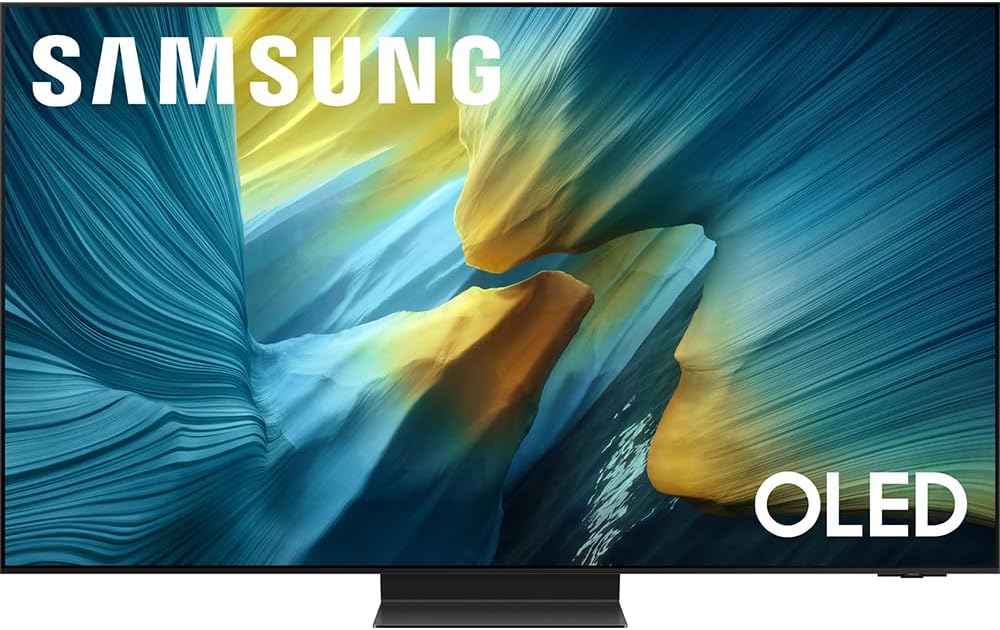
The Samsung S95F OLED offers top-tier design with some of the best anti-glare screen technology on the market. It's not only equipped with four HDMI 2.1 ports and wireless connectivity, but it also features a thin bezel, giving it an Art Deco chic that's hard to beat.
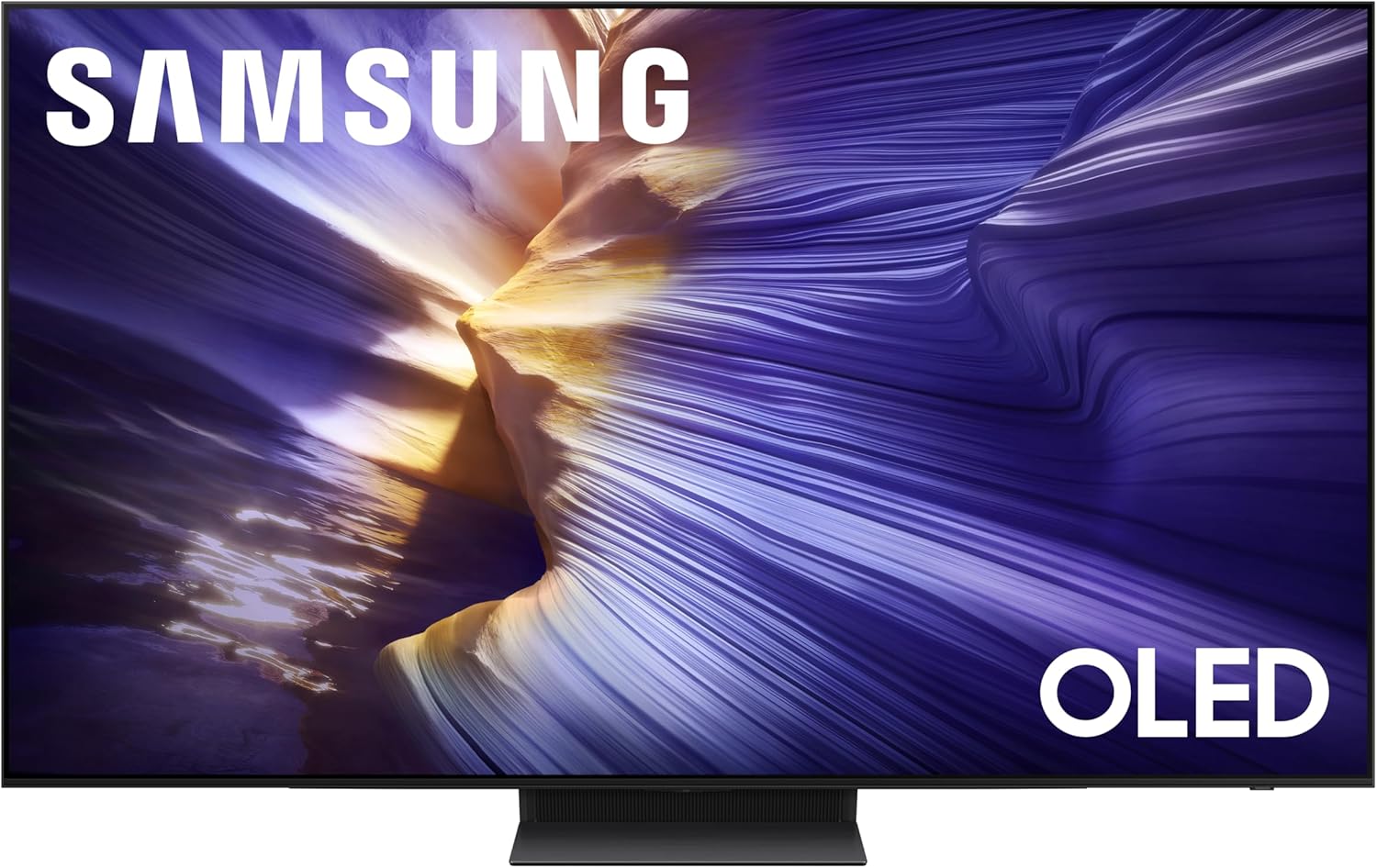
The Samsung S90F is the value proposition of the year. It's equipped with some of the most vibrant color performance thanks to its QD-OLED panel and stellar AI processing.
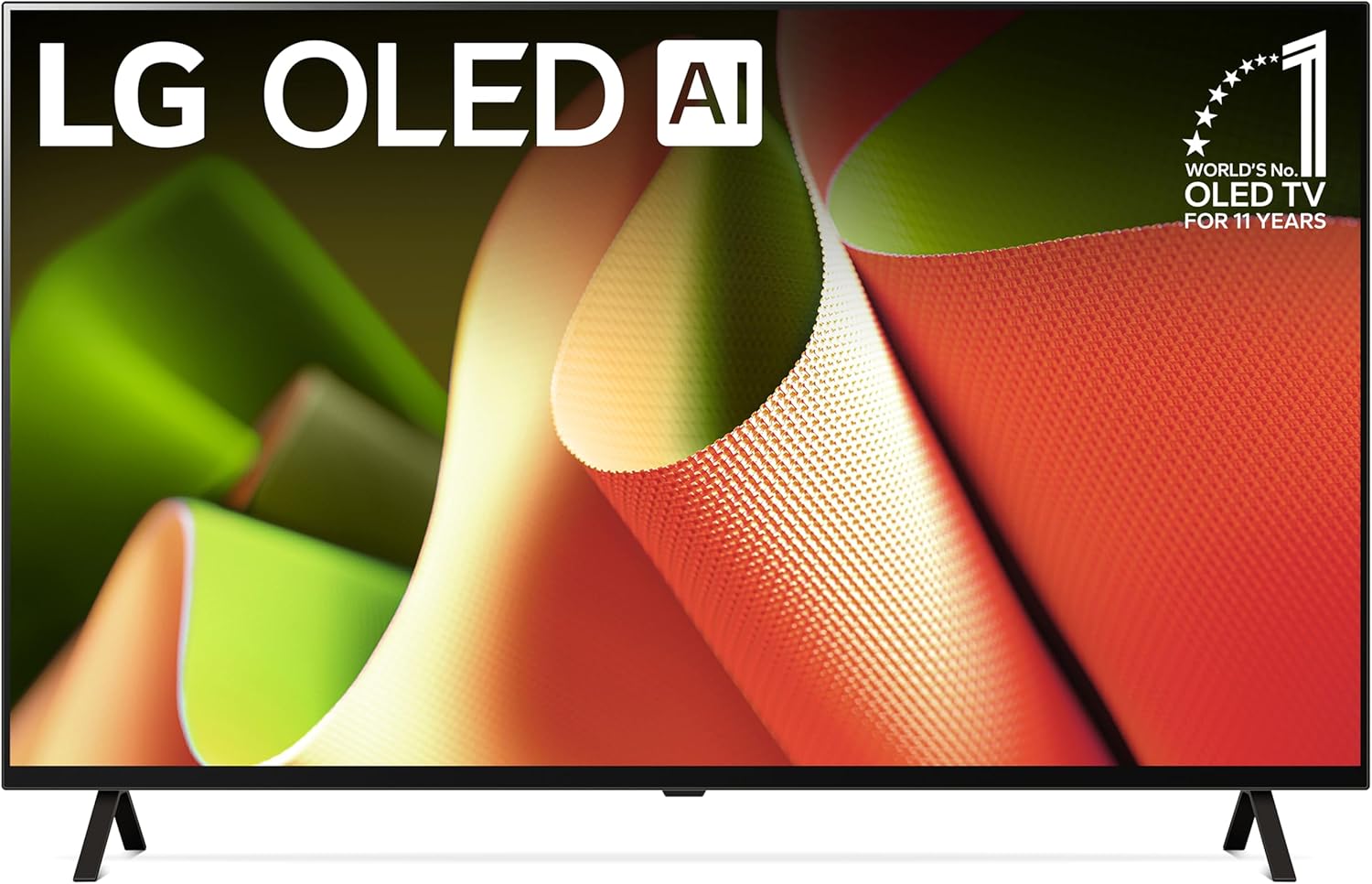
Despite being launched in 2024, the LG B4 remains a top pick as an inexpensive OLED. With four HDMI 2.1 ports and a 120Hz refresh rate, it's an ideal choice for console gamers looking for excellent picture quality and features on a budget.
The best HDMI 2.1 TVs available right now
Why you can trust Tom's Guide
Best HDMI 2.1 TV overall
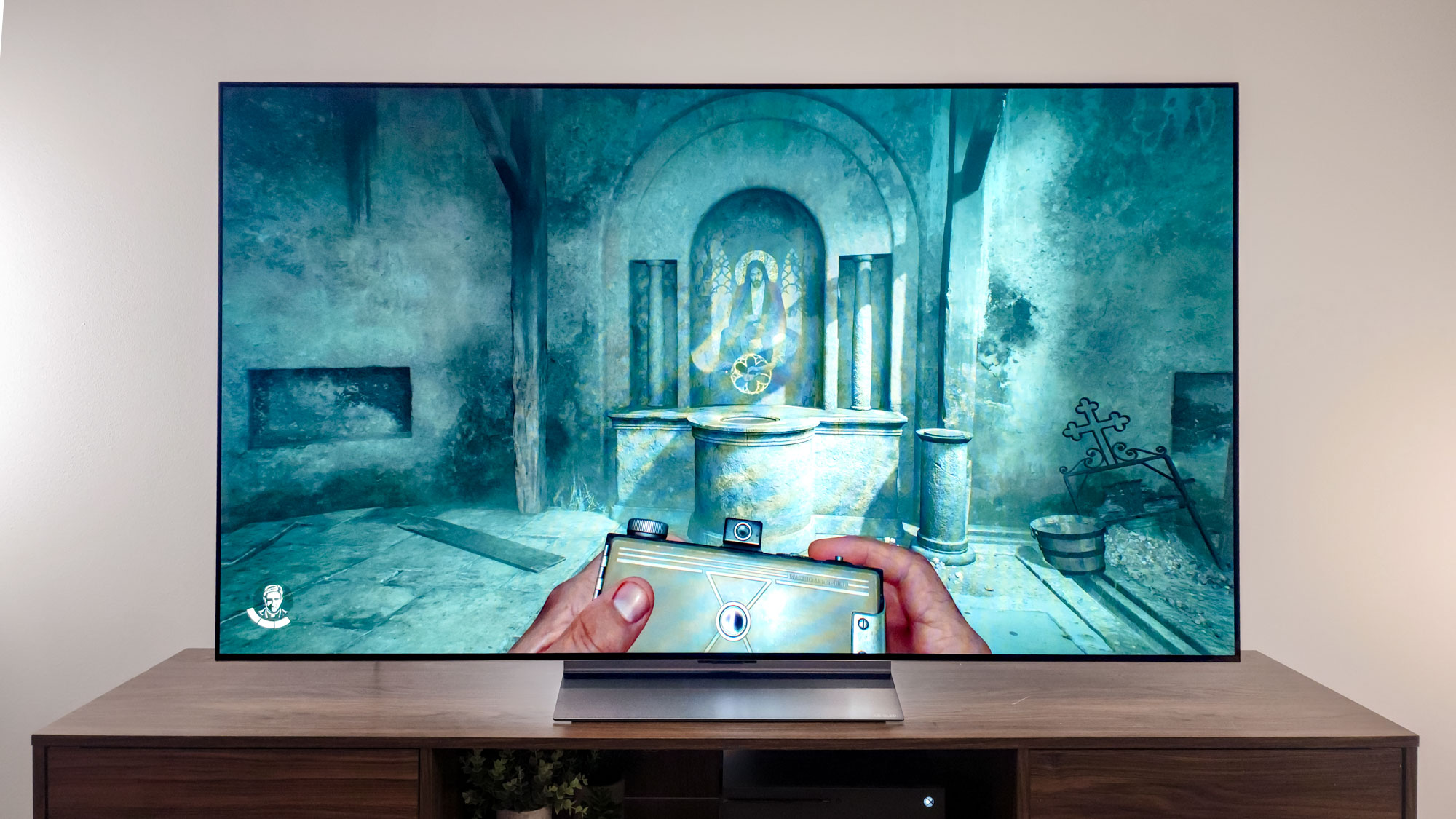

Specifications
Reasons to buy
Reasons to avoid
The LG C5 OLED is a stunning entry into LG's webOS platform. Marking it as both the best HDMI 2.1 TVs and among the greatest in 2025, the LG C5 is one of the only TVs we've tested all year to receive a perfect score.
In our review, we noted the C5's stellar brightness and color performance, which is owed to its WOLED panel. The C5 can produce 1,165 nits of peak brightness in HDR, which is respectable for an OLED TV. It also delivers excellent color performance, offering a Delta-E score of 1.25. The lower the Delta-E, the better the color accuracy, meaning the LG C5 will make everything from skin tones to sweeping vistas look true to form.
Of course, it wouldn't be one of the best HDMI 2.1 TVs without a strong list of features. Notably, it's equipped with four HDMI 2.1 ports and offers up to 144Hz VRR, which is ideal for PC gamers, with a native refresh rate of 120Hz. The C5 also offers a speedy 9.1ms of input latency, making it super responsive for faster games, such as Call of Duty and Battlefield.
The C5 OLED stands out the most, given its value. It's currently marked, making it the perfect choice for those who want a premium OLED at an insanely good price.
Read our full LG C5 OLED review.
Best budget HDMI 2.1 TV
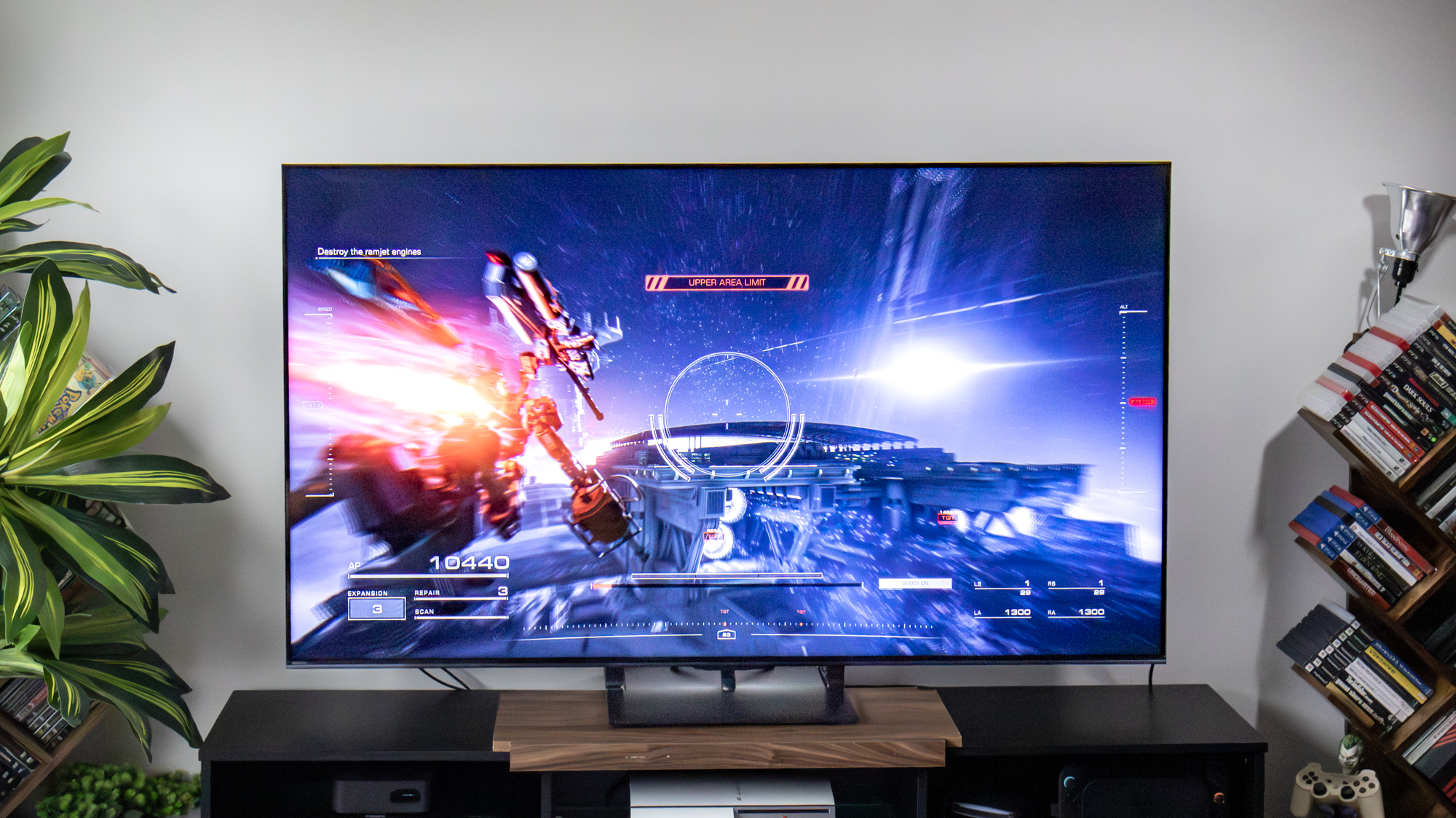

Specifications
Reasons to buy
Reasons to avoid
Hisense makes some of the most feature-rich and god-smackingly bright Mini-LED TVs, and that's no different with the Hisense U75QG. It's safe to say this is one of my favorite Mini-LED TVs of 2025, offering stunning picture performance in HDR, bonkers brightness, and loads of features at an exceptional price. It's a true stunner.
The Hisense U75QG offers 9.8ms of input latency, which is one of the lowest scores we tested for a Mini-LED TV. I was stunned when I saw this number, as most Mini-LED TVs offer around 13ms, evidenced by the entire 2025 TCL TV lineup. It also stands out from TCL's lineup, as well as Sony's models, given that it offers four HDMI 2.1 ports.
The U75QG even outclasses the Hisense U8QG in features, as the flagship model oddly sacrifices an HDMI 2.1 input in favor of a USB-C port. This means you can pay less for the U75QG, receive better features, and still have access to the high 165Hz refresh rate, making this Mini-LED TV perfect for PC gamers.
It's also stellar in picture quality. Tested in our labs, the Hisense U75QG Mini-LED TV spat out a high of 3,338 nits in HDR, which is remarkable. This ensures quality anti-glare performance in addition to improved highlights in HDR content. It's one of the main reasons I enjoyed its HDR performance so much, particularly while gaming, and the brightness can even be expanded by enabling local dimming.
Again, just like the LG C5 OLED, the Hisense U75QG is my go-to pick as one of the best HDMI 2.1 TVs, especially if you're looking to save.
Read our full Hisense U75QG Mini-LED TV review
Best OLED HDMI 2.1 TV
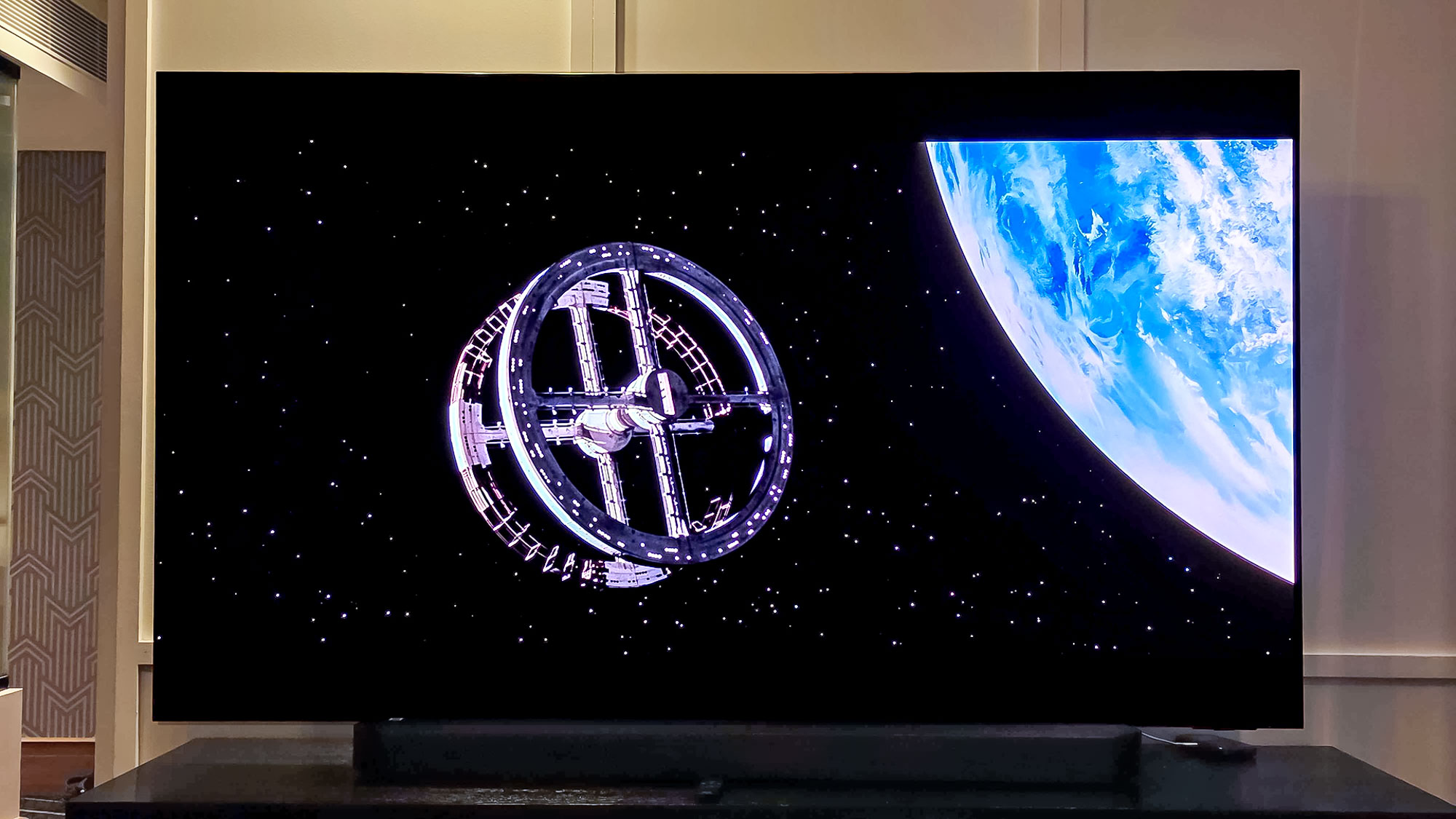

Specifications
Reasons to buy
Reasons to avoid
The Samsung S95F is a true beast of a display and one of the best HDMI 2.1 TVs, as it corrals four HDMI 2.1 ports with incredible anti-glare performance.
How does it do this? Using a matte-finish, anti-glare screen that cuts through reflections like a butcher's knife through paper. When powered off, the S95F gives off the vibes of a blank canvas, making it the perfect OLED to attach to the wall. It's a unicorn in this case, as I'm often complaining about poor anti-glare support in almost every TV review.
Like the previous two TVs, the Samsung S95F is also well-equipped for gamers. It offers a refresh rate up to 165Hz, mirroring the Hisense U75QG. This is a completely new feature in 2025, with only a handful of TVs offering this high a refresh rate, but it's beneficial only to those running the best gaming PCs.
The Samsung S95F has improved over its predecessor, offering 30% more brightness than the S95D, as noted in our review. It also beats the C5 in brightness, with the Samsung S95F hitting 2,138 nits in HDR.
The two major downsides of the Samsung S95F are a lack of Dolby Vision support and a high asking price, which are easy to overlook given its slew of upgrades. Samsung's 2025 flagship OLED has a lot to offer, and if you're willing to look past these minor setbacks, it's a surefire hit in any entertainment setup.
Read our full Samsung S95F OLED TV review.
Best mid-range OLED HDMI 2.1 TV
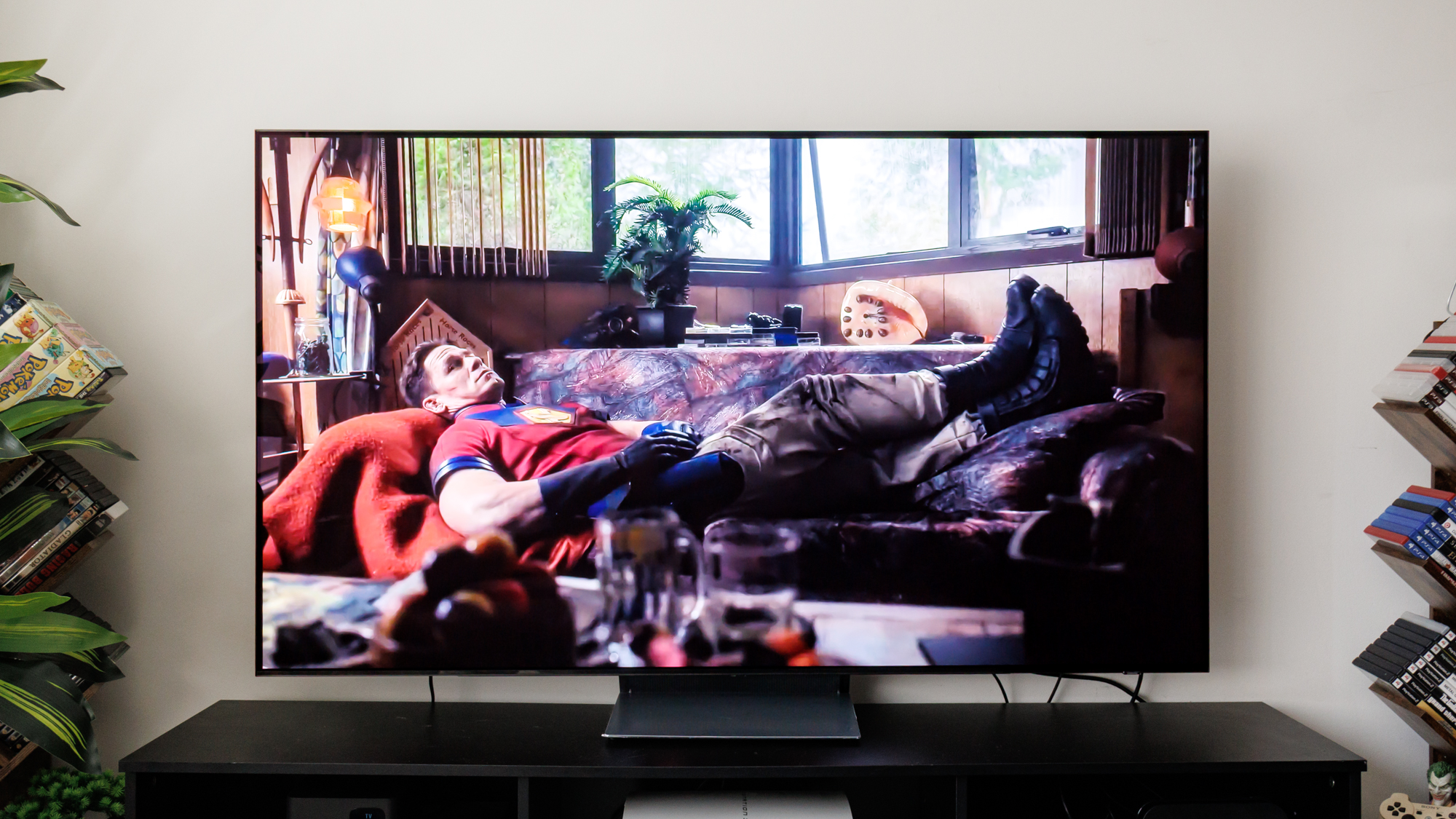

Specifications
Reasons to buy
Reasons to avoid
As one of my favorite OLED TVs of 2025, the Samsung S90F OLED is a no-brainer when looking for a solid HDMI 2.1 TV. It's a lot like the S95F OLED, but much cheaper, offering similar features and slightly lower metrics with brilliant value baked in.
Samsung is known for its excellent anti-glare performance and slim OLED TVs. While the Samsung S90F might not have the best anti-glare performance, it is incredibly thin. This means it will look beautiful whether you have it wall-mounted or attached to its included pedestal stand.
The S90F also has some of the best color coverage we tested all year. In fact, it's matched only by the Sony Bravia 8 II OLED TV, which offers a UHDA-P3 gamut of 100%. This is why HDR content on the S90F looks utterly stunning, and you won't have to pay over $2,000 for it.
Gaming also looks crisp and plays lightning fast on the S90F. I personally played several titles when reviewing this TV, including Silent Hill f, Elden Ring, Armored Core 6, and more. It offers speedy response times, which we measured at 9.1ms. For reference, that's the lowest latency on this entire list, and one of the fastest latencies we tested all year.
I can't get enough of the S90F. It's my favorite TV in 2025, but it lacks Dolby Vision support like all Samsung TVs, which might be something to consider. Samsung has improved the platform significantly. As an owner of the S90D, I can attest to the significant enhancements available on the new set.
Read our full Samsung S90F OLED TV review.
Best budget OLED HDMI 2.1 TV
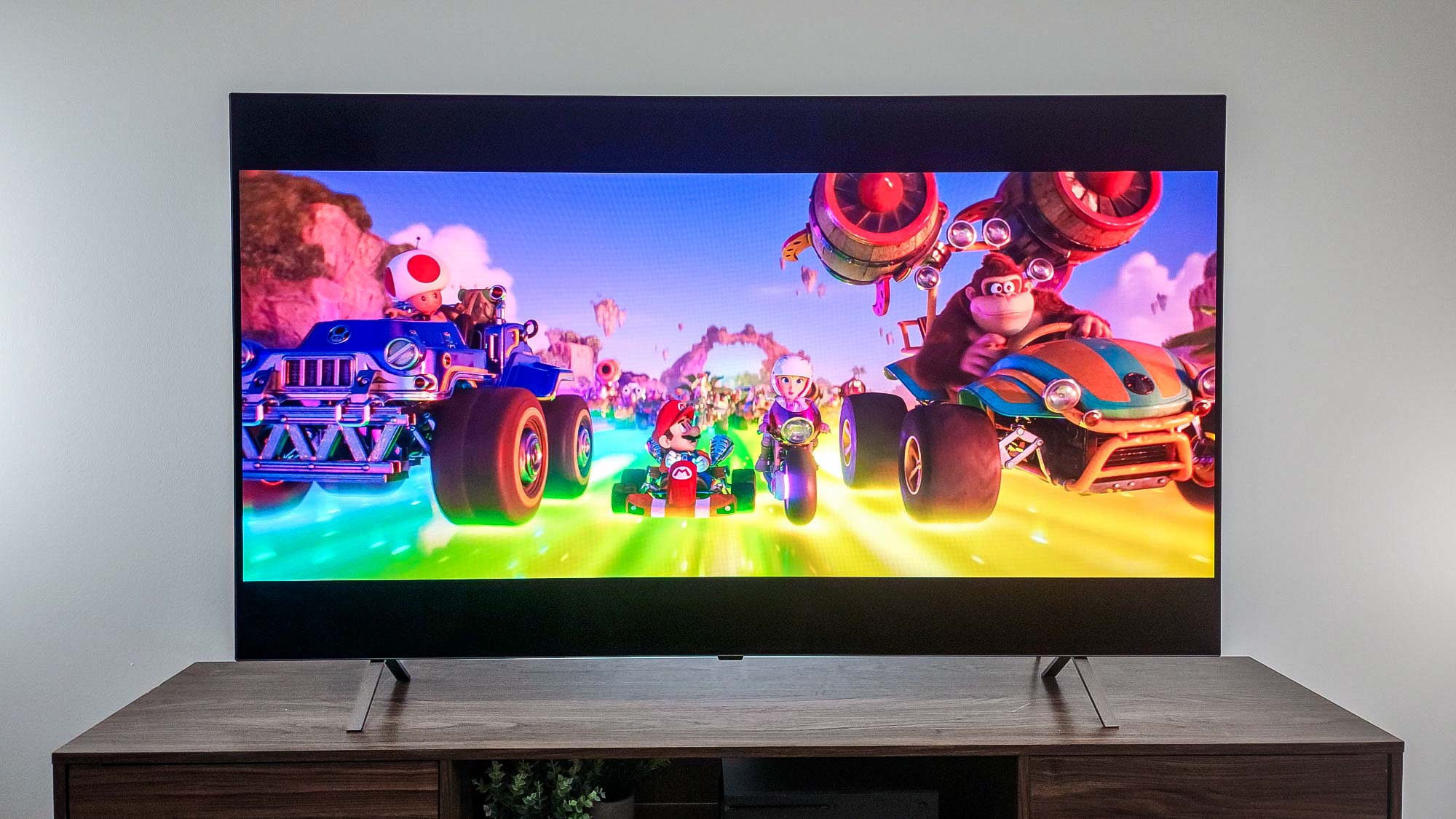

Specifications
Reasons to buy
Reasons to avoid
I checked out the LG B4 last year and was thoroughly impressed with its performance. As a relatively inexpensive OLED, it's built on top of a feature-rich foundation that, incidentally, wasn't quite apparent on its successor. This is why I'm recommending the 2024 model over the new LG B5 OLED, as many of the same features are still present, and the metrics haven't improved much year over year.
In my review of the B4, I highlighted its extensive colors and contrast. One of the things the B4 excelled at was motion processing, with gaming looking fantastic on this set.
Like the rest of the TVs on this list, the LG B4 is equipped with four HDMI 2.1 ports and a low input latency. With Game Optimizer enabled, the latency is a speedy 9.7ms. It's higher than the B5, which is actually 9.0ms, but the benefits beyond that are minuscule. Additionally, the LG B5 still only supports a refresh rate of 120Hz, so console players can save a few extra bucks getting last year's TV for little change in picture quality.
The B5 is also easy to slot into any entertainment setup, given that it's available in a wide range of sizes. If you need a smaller screen for your desk setup or are looking to upgrade to a big-screen set, there's a wide variety of configurations to choose from, making it a solid choice for many different buyers.
Read our full LG B4 OLED TV review.
HDMI 2.1 TV FAQs
What is HDMI 2.1?
HDMI has been around for several years, but while the HDMI ports on your four or five-year-old TV may look the same as those on the top models listed here, not all HDMI connections offer the same functionality.
A newer HDMI standard is HDMI 2.1, which boasts increased bandwidth (48 Gbps) to transfer more data, specifically three times the bandwidth of HDMI 2.0 (18 Gbps, or enough for 4K video at 60 frames per second). HDMI 2.1 supports uncompressed 8K video at up to 60Hz, or 4K video at up to 120Hz.
It's a much larger pipe, allowing for more transferable information between video sources, such as 4K Blu-ray players and game consoles, and out to other devices, such as soundbars. The increased data allows for higher resolutions and frame rates, making it essential for 8K TVs and 4K gaming at higher frames.
Other key features of HDMI 2.1 include:
Auto Low Latency Mode (ALLM) detects when a game console is connected or powered on, automatically switching the TV to game mode. In turn, this shuts off unnecessary video processing to reduce lag times. It's one less step you'll need to take before diving into your game.
Variable Refresh Rate (VRR) uses adaptive sync technology, similar to Nvidia G-Sync and AMD FreeSync, aligning the TV's refresh rate with the frame rate of a connected game console. By matching refresh rate to frame rate, the TV can display games with perfect smoothness, eliminating judder or screen tearing that can be caused by new frames rendering mid refresh.
Enhanced Audio Return Channel (eARC) is another feature on HDMI 2.1 (and on HDMI 2.0) that offers connections between a TV and a soundbar or other audio equipment using an HDMI cable. ARC allows a downstream connection over HDMI, meaning that you can use one of your regular HDMI connections to output audio to a soundbar. With the higher bandwidth of HDMI 2.1, ARC technology is updated and enhanced to support uncompressed audio formats, including Dolby Atmos. (Read our article What is HDMI ARC? to learn more.)
Who needs HDMI 2.1?
There are a few instances where HDMI 2.1 will be indispensable, with features that require the new high-bandwidth connection.
The first is gaming. To get the best performance from a PS5 or Xbox Series X, you'll need one of the best HDMI 2.1 TVs to take advantage of ALLM and VRR. These features are only available in the 2.1 spec, so we firmly recommend HDMI 2.1 for anyone looking for the best gaming TVs.
Secondly, if you own a solid Dolby Atmos soundbar (check out our best soundbars for some suggestions), HDMI 2.1 ports give you access to eARC. Using that special input, which is often the third HDMI port on a TV, your soundbar can receive an uncompressed Dolby Atmos soundtrack from your display. This ensures the best possible audio performance, broadening the immersion in video games and movies.
How to choose the HDMI 2.1 TV that's right for you?
To put it bluntly, when choosing the best HDMI 2.1 TVs for you, look for one that offers four total HDMI 2.1 ports. It's that simple, as this ensures you receive the most robust coverage for all your connected devices. Since you're sacrificing one eARC connection for a soundbar, you'll want a full range of HDMI 2.1 inputs, so your other connected devices don't miss out on those additional features we mentioned previously.
You'll also want to consider a TV's input latency and refresh rate. While anything under 13ms is ideal, the best HDMI 2.1 TVs offer latency under 10ms for the most noticeable results. Refresh rates have dramatically improved. In 2025, Hisense, LG, and Samsung introduced the first 165Hz TVs. If you're using a modern gaming console, anything over 120Hz is overkill, but a gaming PC can easily tap into these higher refresh rates, especially if a TV can drop down to 1080p for even faster speeds.
While it doesn't directly affect performance, you'll also want to consider the panel type: QLED, Mini-LED, or OLED TV. The best HDMI 2.1 TVs listed above take this consideration to heart, highlighting the most apt choices you can buy right now in terms of features and price-to-performance.
What about 8K TVs with HDMI 2.1?
8K early adopters will need HDMI 2.1. As the first single HDMI connection capable of carrying 8K resolution at watchable frame rates, HDMI 2.1 is indispensable for 8K. Or it will be, whenever 8K media is more readily available.
For the time being, there is nothing noteworthy, which is why we often don't recommend 8K TVs. There are no 8K-enabled media players or game consoles either, so it's a moot point for gamers. The Xbox Series X and PS5 can theoretically handle 8K resolutions, but it's yet to be enabled. And even if it were, there's a big doubt about whether we will see 8K native gaming any time soon.
When 8K media does eventually arrive – and it's not a matter of "if" but "when" – HDMI 2.1 will probably be outdated in the face of HDMI 2.2. The new standard was announced in early 2025, offering double the bandwidth of HDMI 2.1 (up to 96Mbps of transfer speeds).
While it's yet to be added to any TVs, HDMI 2.2 will be the one to look out for if you're truly keen on 8K. As it stands, the resolution is still in its infancy. Feel free to check out our HDMI 2.1 vs HDMI 2.2 page for more information on the next-gen input.
What about HDMI 2.1 cables?
I know what you're asking yourself right now, and the answer is "Yes." Yes, HDMI 2.1 does require new cables — but that's only if you're aiming for the most robust coverage in gaming. Since HDMI 2.1 boasts significantly more bandwidth and features than older versions, using an older HDMI cable won't cut it.
That's not to say that an older cable won't work. The different versions of HDMI are backwards compatible, so you can still connect with an older cable, but you will forgo higher bandwidth and features that the 2.1 spec offers. Older cables also serve as a bottleneck, preventing the use of higher resolutions and frame rates.
How we test TVs with HDMI 2.1
Like every other TV we review, all of the above TVs went through our rigorous testing process. Our collection of lab tests measures color gamut, color accuracy, and brightness to objectively see which sets are the best for these key indicators. We use these results to make numerical comparisons based on color and display quality.
We also test for lag time, measuring to the millisecond how long it takes for content to travel from the original video source to the screen. TVs with shorter lag time offer better gaming performance, especially important for HDMI 2.1 shoppers, who are most likely to be using HDMI 2.1 connections for 4K/120Hz support with their modern game console.
We spend hours with each set to see how our lab results translate into anecdotal performance. We also compare competing sets using a range of content across several sources. With that information, we highlight the TVs that look the best, sound the best, and offer the best viewing experiences.
Of course, we also consider smart TV functionality and apps for each TV, testing everything from the remote control design to the voice interaction. You can read more about our testing process and tools in the how Tom's Guide tests and reviews TVs page.
Get instant access to breaking news, the hottest reviews, great deals and helpful tips.

Ryan Epps is a Staff Writer under the TV/AV section at Tom's Guide focusing on TVs and projectors. When not researching PHOLEDs and writing about the next major innovation in the projector space, he's consuming random anime from the 90's, playing Dark Souls 3 again, or reading yet another Haruki Murakami novel.
- Nick PinoManaging Editor, TV and AV
